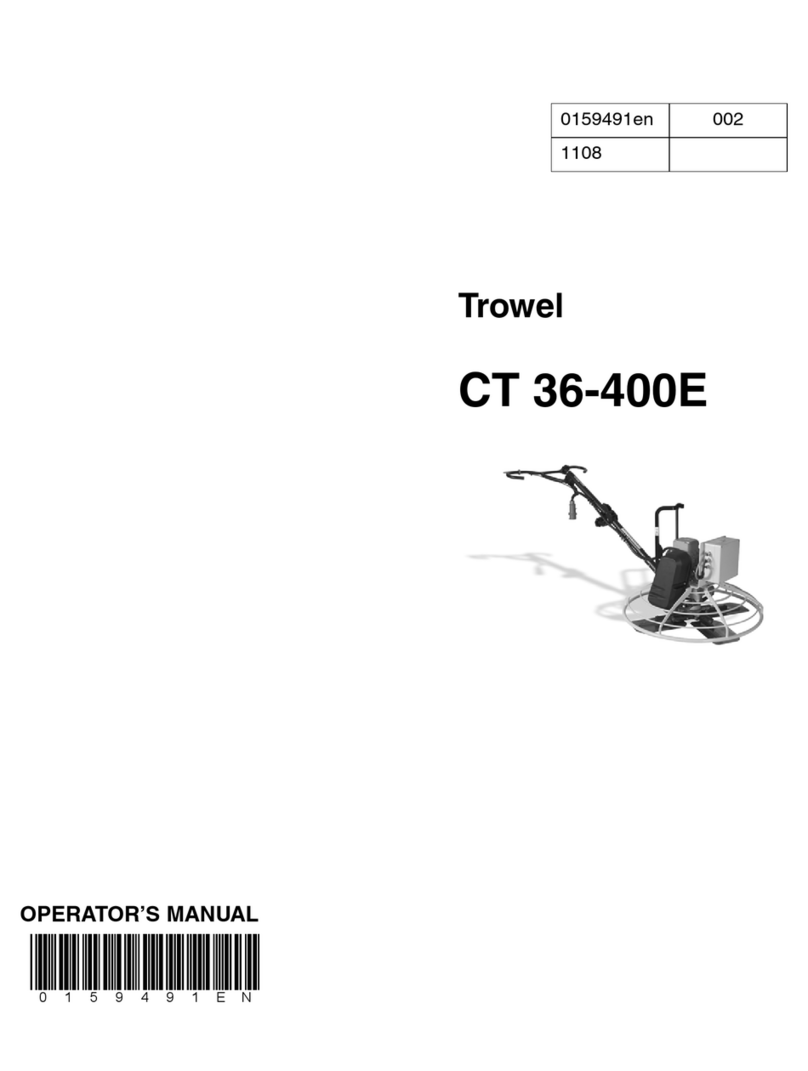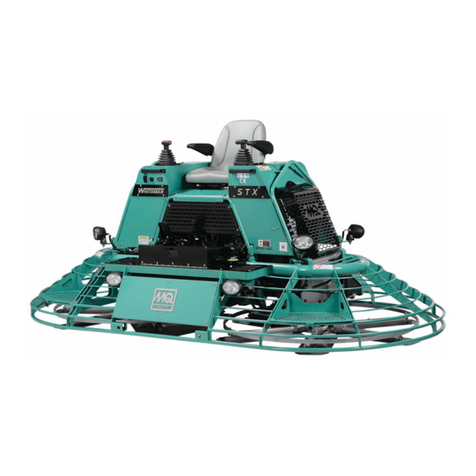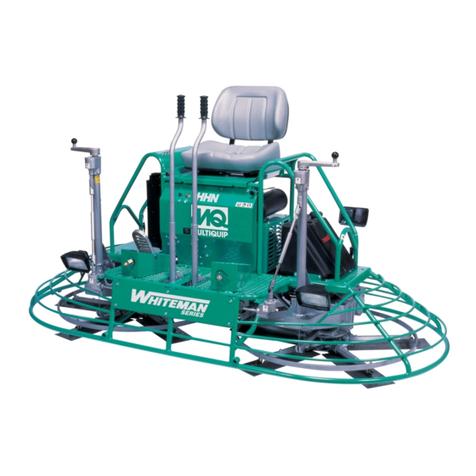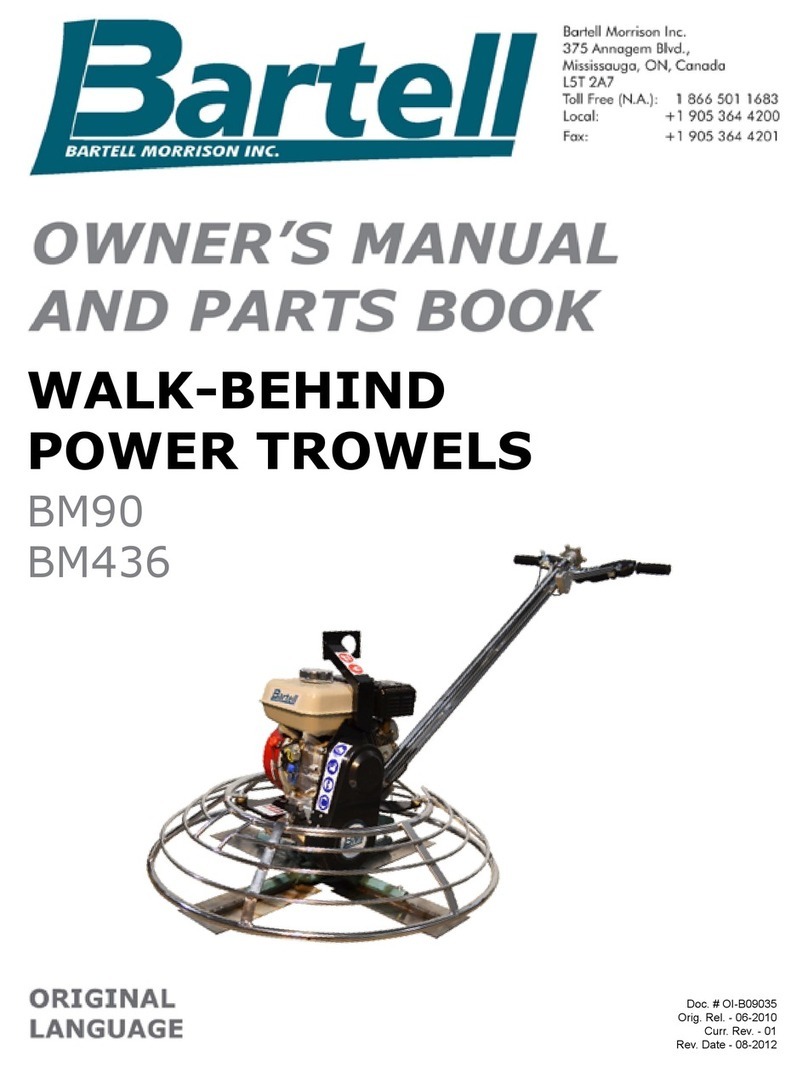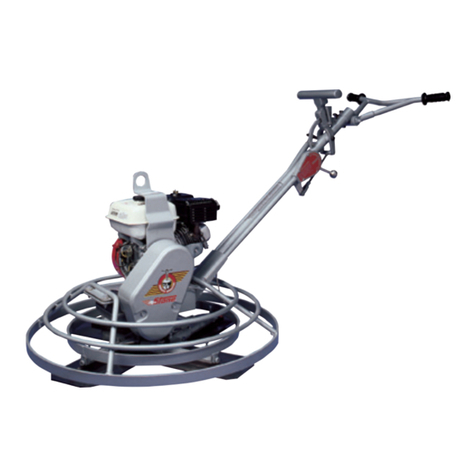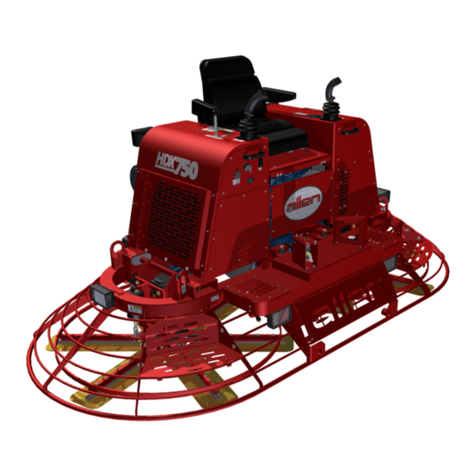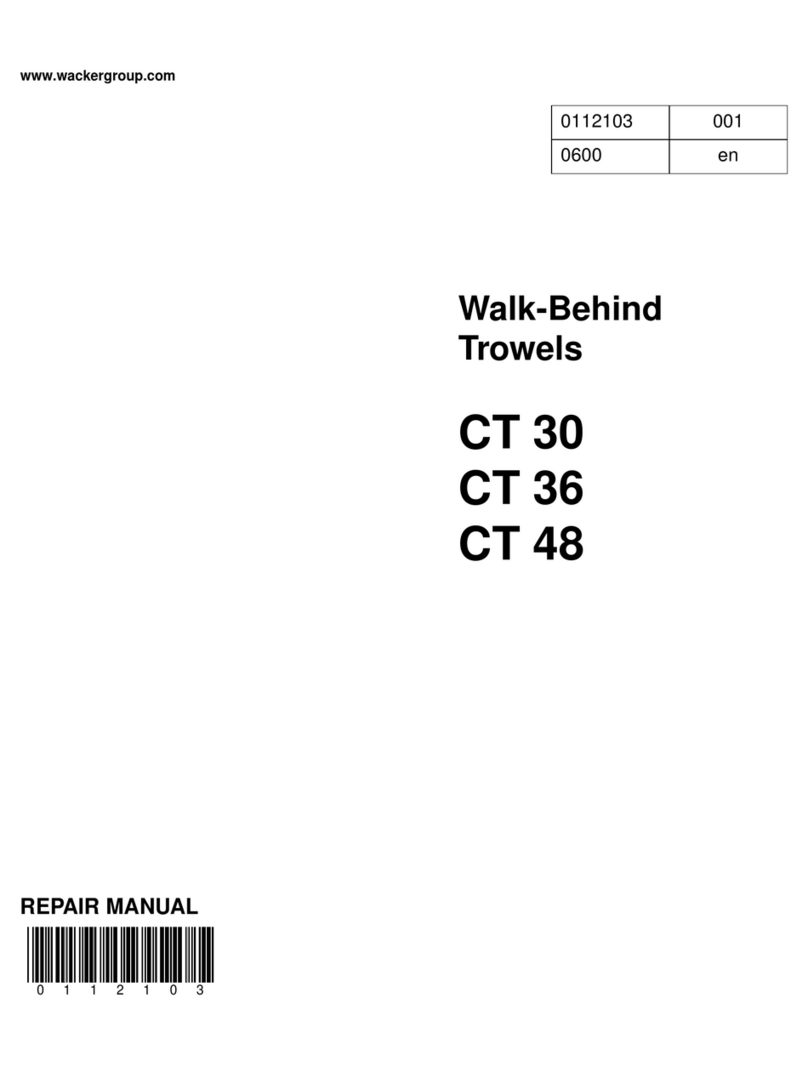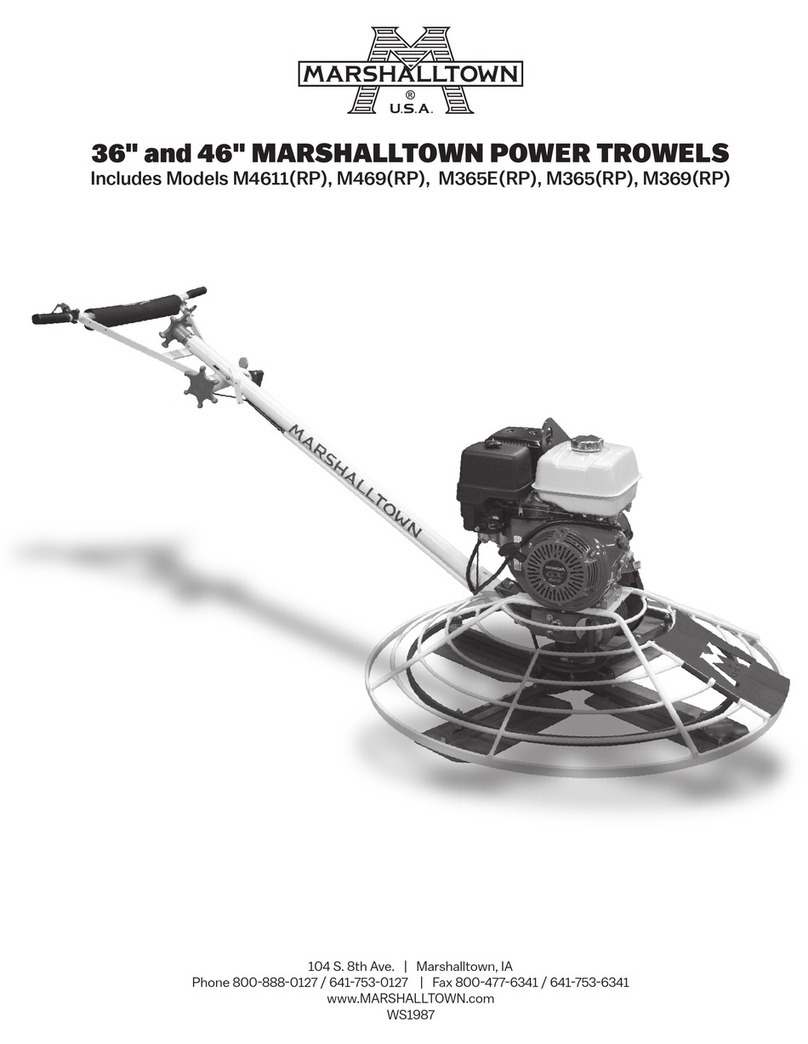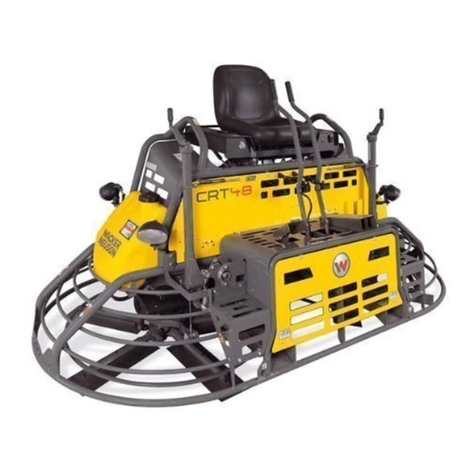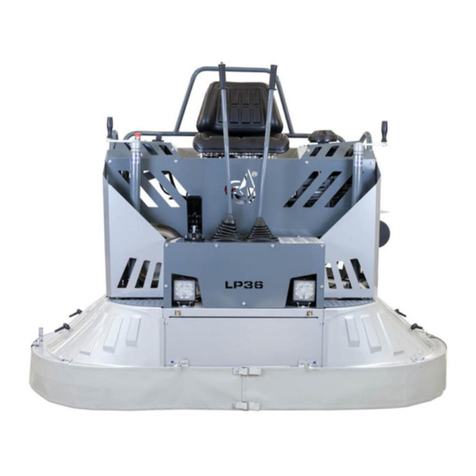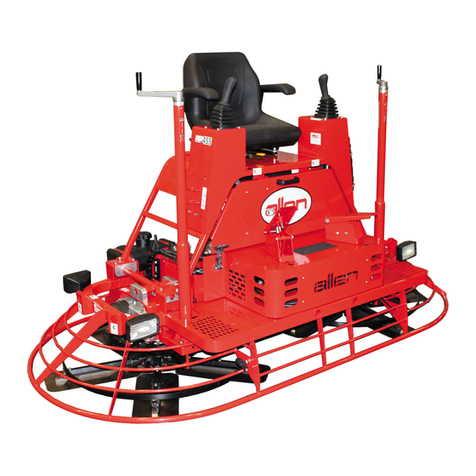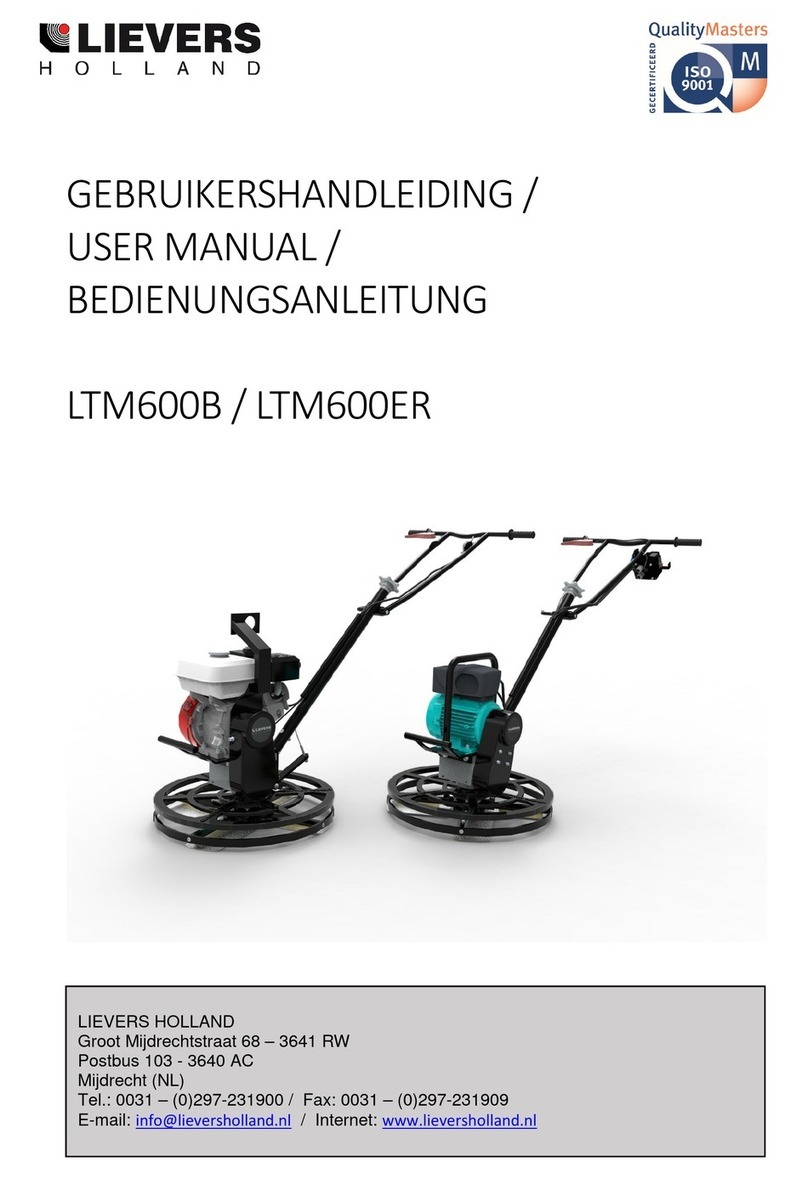
1. SAFETY INFORMATION
1.1 Operating Safety
Only trained personnel are permitted to start, operate, and shut down the machine.
They have received instruction on how to properly use the machine and are familiar
with required safety devices
The machine must not be accessed or operated by children and people impaired by
alcohol or drugs.
NEVER operate this machine in application for which it is not intended.
NEVER allow anyone to operate this equipment without proper training. People
operating this equipment must be familiar with the risks and hazards associated with
it.
NEVER operate the machine with the beltguard missing. Exposed drive belt and
pulleys create potentially dangerous hazards that can cause serious injuries.
DO NOT allow anyone to stank or lean on the unit during operation.
Do not run the machine indoors or in an enclosed area such as a deep trench unless
adequate ventilation, through such items as exhaust fans or hoses, is provided.
Engine exhaust contains carbon monoxide. This is a poison you cannot see or smell.
Exposure to carbon monoxide can cause loss of consciousness and CAN KILL YOU
IN MINUTES.
Do not operate the machine with unapproved accessories or attachments.
ALWAYS Keep the safety stop switch system in adjustment and good operating
condition at all times. Do not operate the trowel if it does not work properly. Out of
control Trowels can cause serious personal injury and damage to fresh concrete
surfaces. This system will automatically stop the unit if the operator loses control of it
during operation.
ALWAYS make sure the safety stop switch is disengaged (lever in the down position)
before starting the unit. Keep one hand firmly on the handle while starting and do not
let go of the handle during operation.
ALWAYS wear protective clothing appropriate to the job site when operating the
machine.
ALWAYS close fuel valve on engines equipped with one when machine is not being
operated.
ALWAYS store the machine properly when it is not being used. The machine should
be stored in a clean, dry location out of the reach of children.
Read, understand, and follow procedures in the Operator’s Manual before attempting
to operate the machine.
